10 Tips on How to Choose Colors for a House Exterior
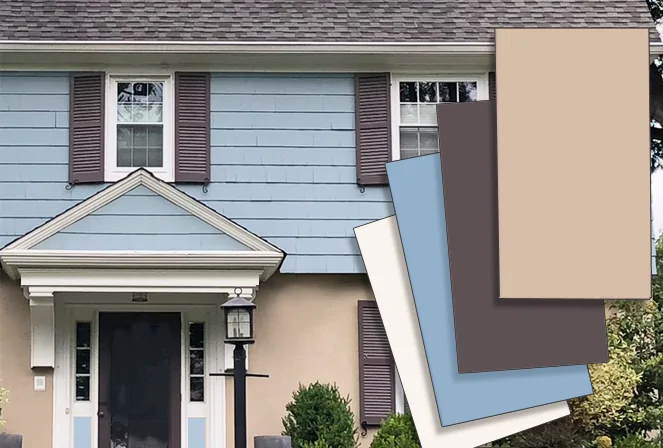
People often concentrate on the intricate designs of their interior space and forget that the outer part of their home reflects more on their taste and style – that’s to say that they haven’t, in the least, figured out how to choose colors for the house exterior.
Every color, light or dark, has its way of adding exclusive charm and curb appeal to your outdoor environment. If you’re struggling with choosing the right exterior paint scheme for your home, this guide will walk you through how to choose a stylish paint color for your house exterior.
1. Consider the Neighbourhood
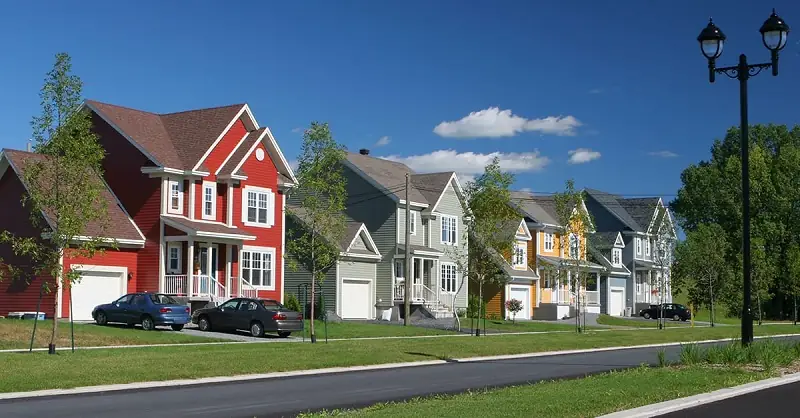
No matter your home’s architecture, one tip on how to choose exterior colors for your house you need to consider is to look around you and see what other residences look like before deciding on the paint scheme.
You’ve most certainly heard the saying, “No man is an island of himself.” This also applies when choosing painting colors for your home. While you may be inspired to paint your home with a tone you favor, your neighborhood may offer more revelation than you think if you really observe it.
Do you live around a natural landscape, in a historic area, or newer suburb? Houses around historic sites often spot drably yet bold colors, while new modern homes often have light and minimalist statement tones that make them pop.
2. Choose a Palette Around Your Home’s Elements
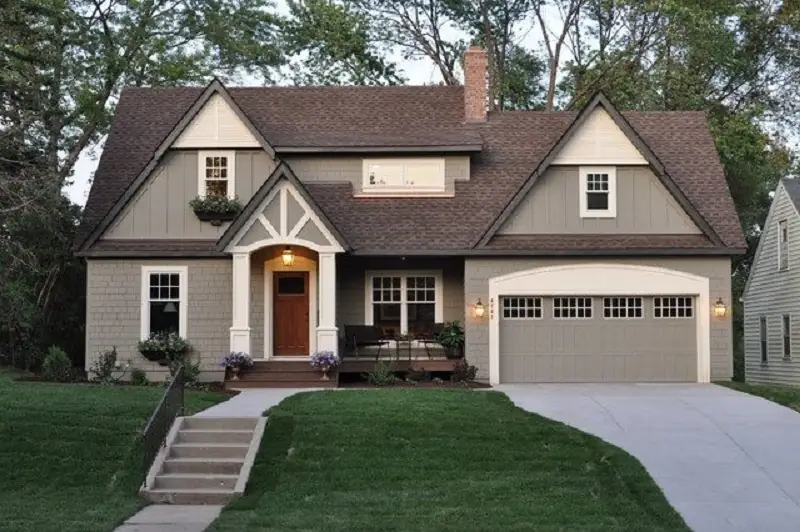
Another tip on how to select paint colors for a house exterior most people don’t consider is to factor in the current hues of the house structure.
Window trims, bricks, stone, tiles, door, landscape, the size of the house, and even the roof already have a color of their own. Ignoring them and using additional shades of color that may not blend well with what you already have means creating excessive tones that may not be suitable for your home’s exterior.
Imagine using a red color on the house within natural landscapes that demands hues like green, pastel, or soft neutral ones. Or painting black on an enormous house. The result will most likely be a foreboding atmosphere around your massive residence.
No matter how small these elements might seem, their undertones influence your home’s paint scheme more than you can imagine. So, rather than use trendy pigments, go for ones that coordinate the small elements and undertones around your home better.
3. Plan Around Your Home’s Architectural Style and Era…
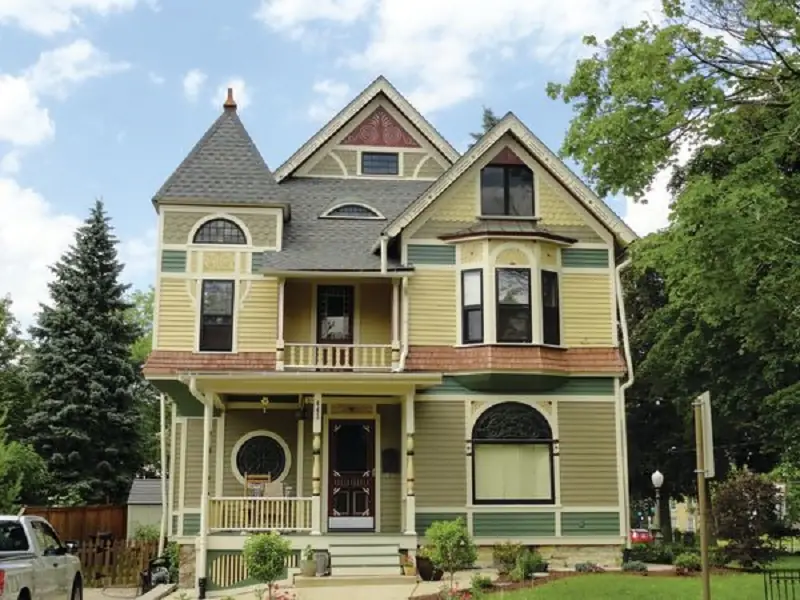
The most essential features interior designers consider when contemplating how to choose the right exterior color for your house are its architectural style and era. The first and foremost reason is to avoid misrepresentation.
What will a burnt orange color say for a classic federal-style house? Can you picture what a cottage farmhouse will look like in pink? Absolutely shocking for the old-century locals if they were to pass by your home.
If you have a Craftsman bungalow residence or a replica of Queen Anne Victorian houses, you want to stick to their traditional dark green, olive, russet, sage green, brown or red tones.
4. …Or Copy from Others If You Can’t Find a Suitable Color
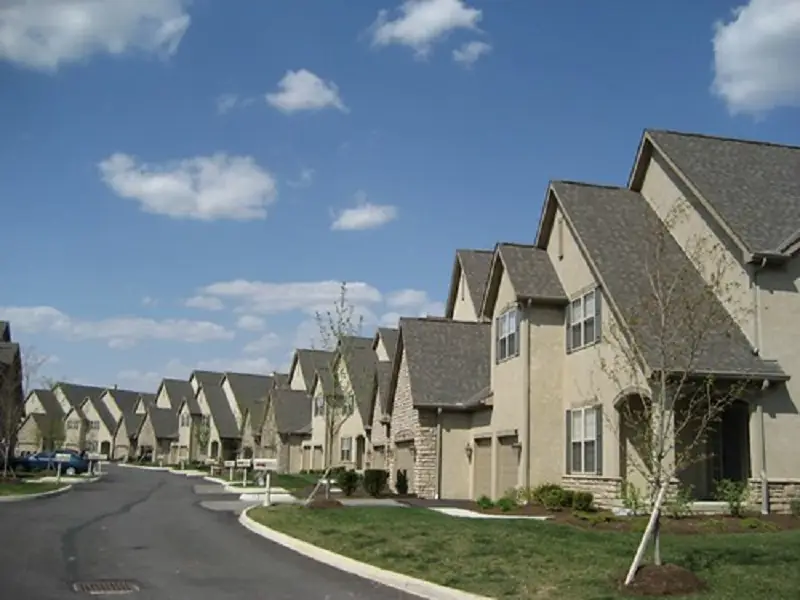
Who says your paint scheme has to be uniquely inspired by you? Picking a color that suits your home’s external parts is a difficult task, especially if you can’t really narrow down your choices.
If you’re pondering over how to choose an exterior house color scheme that matches the visual effect you want, the simple trick is to check around you to see what works.
So, rather than spend time brainstorming on a suitable theme, explore the neighborhood to find a residence with a similar architectural style to yours. Then, take snapshots of them to help make your final decision. Then again, if you are going to use this option, make sure to pick one that truly echoes your personality and tastes.
5. Don’t Pick Paint Just Because It Is in Trend
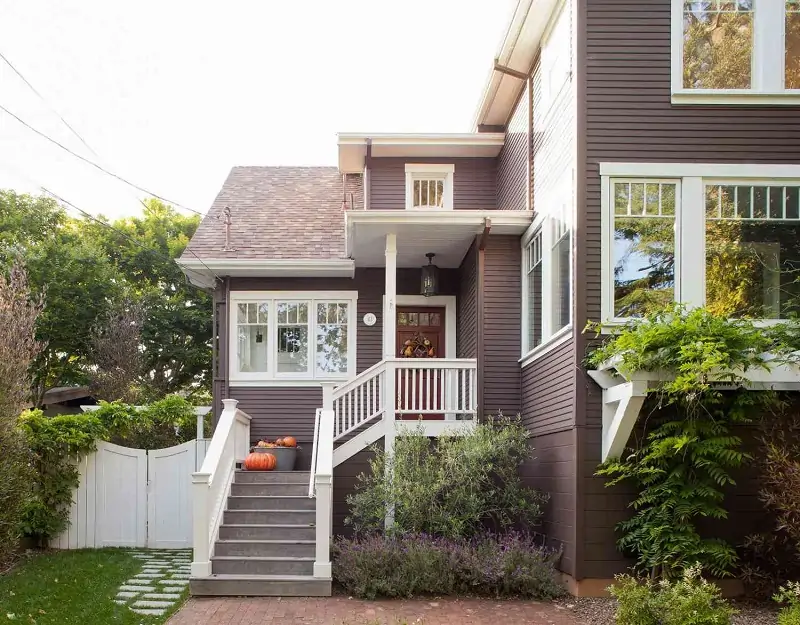
People pay more attention to indoor colors than exterior paint. It’s not because they don’t want to change their outdoor paint schemes but because they easily prioritize where they spend more time.
It simply means that outdoor colors often stay longer without any touch-ups. Hence, they are a long-term commitment. So, imagine using dull paint that leaves little to no impression when people walk by your home.
When choosing a color for your outdoor space, choose ones with a timeless appeal so you won’t have to fall victim to the swift changes in trend. Don’t use brown because others use it. You might love it now, but as soon as it goes out of style, your home may lose its appeal.
6. Consider Your Interiors
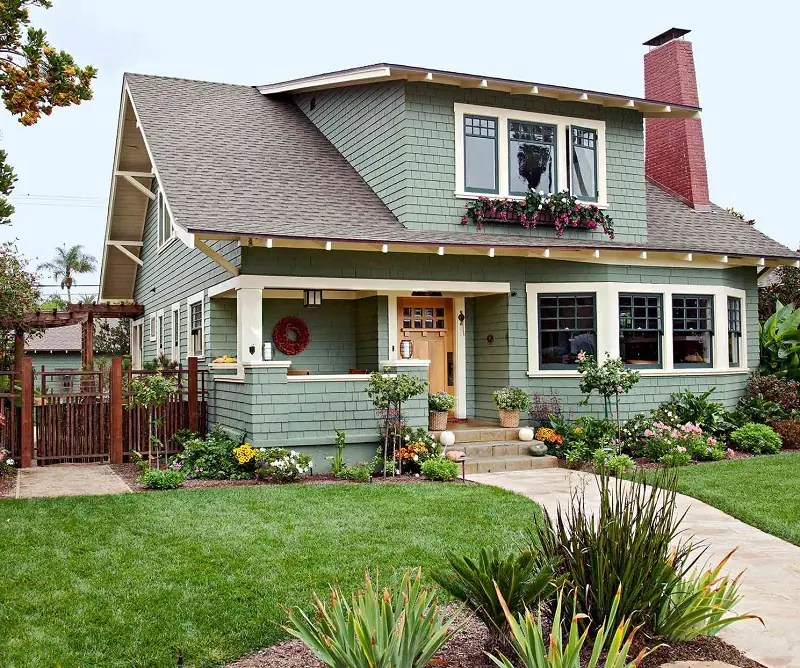
You won’t always find the right solution for how to choose a paint color for your house exterior if you don’t examine your home’s interior design.
Colors make things appear emotive, from luxurious to dull, lively, and even homey. Simply put, how you use them can affect the overall atmosphere and visual appeal they offer, especially if you spend your relaxing time both indoors and outdoors.
Looking indoors will help you select a more cohesive paint scheme and makes the outdoor environment feel homier. For example, if you use green paint indoors and apply it outdoors, you won’t have results that clash, especially if you can see the indoor setting from outside.
7. Factor in Light
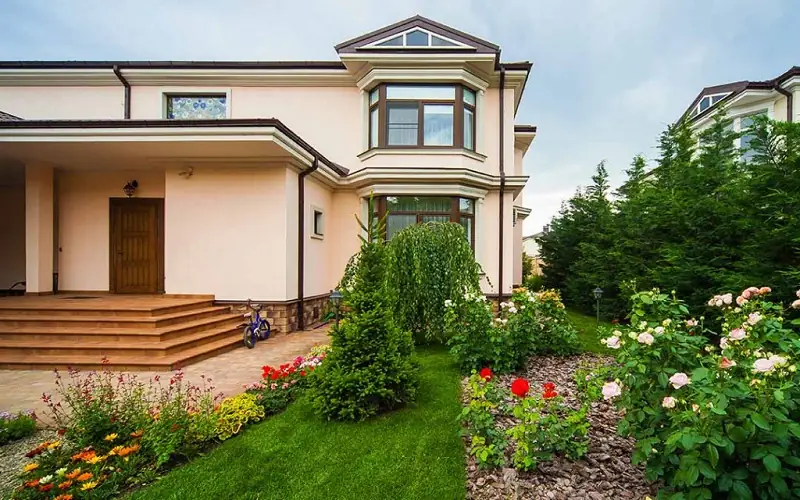
When pondering how to pick house colors for exterior painting, don’t forget to consider light effects.
Light plays illuminative roles no matter where you use it. Your exterior painting may change the initial color to something more intense, vibrant, or cool. Then again, do you really want something that changes color at every turn?
An advantage of light reflection is that it makes your outdoor space look uniquely different from all others. On the downside, the biggest con is that you may not really achieve the visual aesthetics you aim for.
For instance, using light tones like cream means that in daylight, your home retains its natural tone. At night, however, most people may mistake its color for white. Fortunately, a good trick for keeping a balanced tone, no matter the time of the day, is to add two to three layers of the same color for depth.
8. Stick to the Code of Three
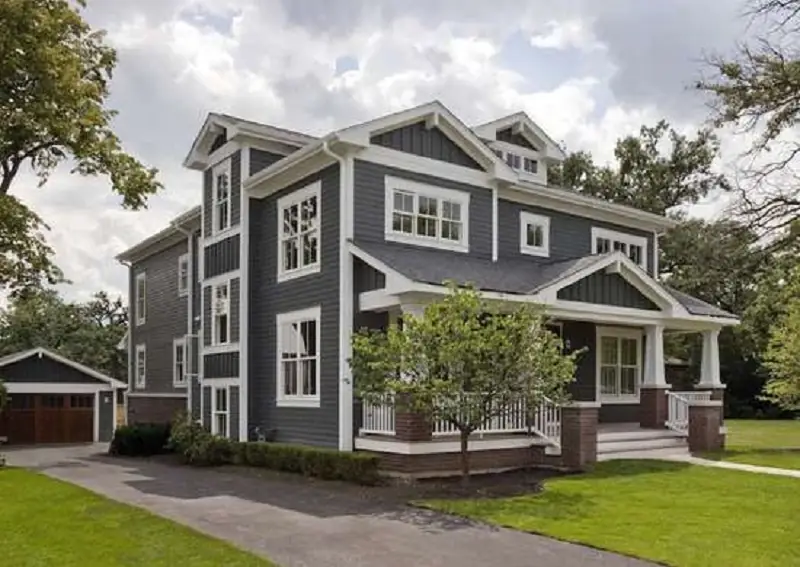
No matter how you look at it, you can’t avoid color combinations, especially when painting a large outdoor space. Still, matching colors does not mean using different shades in all their glory excessively. Instead, choose only three colors to combine – one bold shade and two light hues.
Paints in the same colors but varying tones give a nice monochromatic scheme and can look easy on the eye when used outdoors. Still, if you favor neutral tones like brown, stick to more coordinated paint matches like cream and beige to avoid clashes.
9. Put the Wall Surface in Mind
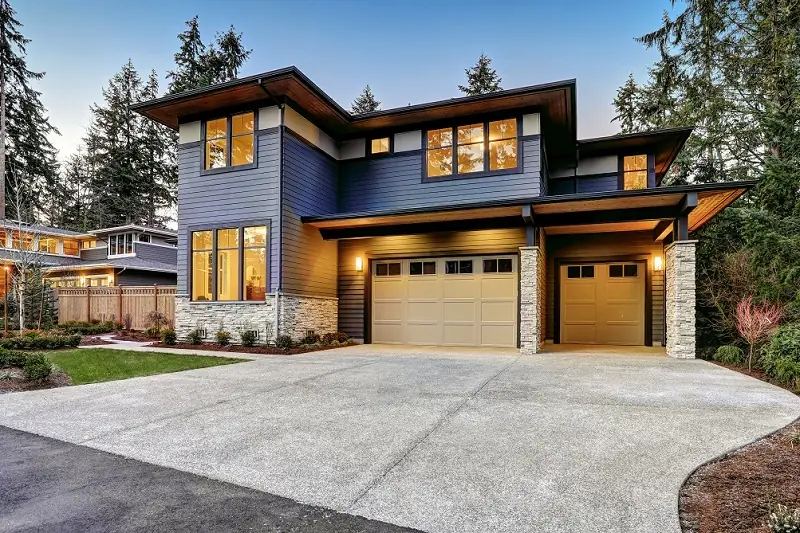
All surfaces have their pros and cons when it comes to the color palette you choose, and the texture of the surface of your house is an important factor that directly influences the aesthetic appeal you are going to have.
For instance, concrete walls won’t look inviting in terracotta or brown hues, while clay and wood are better suited for these shades. Even though you might achieve a good result, concrete walls painted brown still won’t be as catchy as this same shade used on wood. Instead, if your home has concrete walls, use blue and gray. They give your concrete wall a cooler — and more natural — appearance.
10. Test Color Samples Before Use
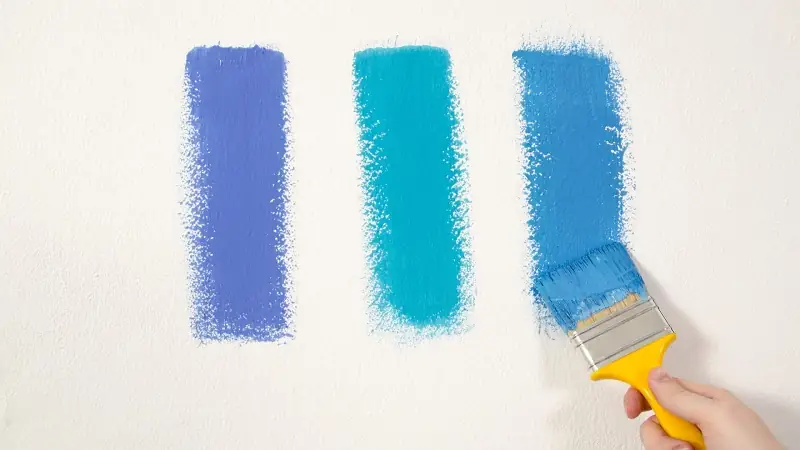
As you contemplate how to choose paint colors for the exterior of the house, the biggest mishap that may occur is paint schemes not being what you imagined.
This could disrupt the painting process and impact your finances as you may have to get another paint to achieve the desired effect. On the other hand, you may have no option but to use the paint as it is.
Once you know what color you want for your outdoor space, be sure to get samples of each paint and test them out on a large canvas and consider how light influences them at different times of the day (under sunlight and in shadows) before investing in the paint. If the result turns out as expected, then go for it.
FAQs
Here are the answers to some commonly asked questions about painting your house.
The best color for your home’s exterior depends on elements like the front door, window frames, railings, roof, fretwork, and even patio. The type of material used for your home’s architectural work also determines the tones you can use. However, off-white, cream, and beige are the most popular colors many homeowners often use for their modern homes.
Most houses have up to five or more colors highlighting the small details around the outdoor space. Newer houses benefit from this palette mostly, while traditional homes will look better with two to three colors.
Conclusion
Painting is a stressful process, but choosing colors to match your exterior environment can be twice as difficult. No matter how daunting this task might seem, you will always find an easy route when you consider the neighborhood you live in, your home’s architectural style, landscape elements, light reflections, your interior design, and the texture of the wall you want to paint. Whatever your goals, these tips on how to choose colors for your house exterior will help you make an informed decision.